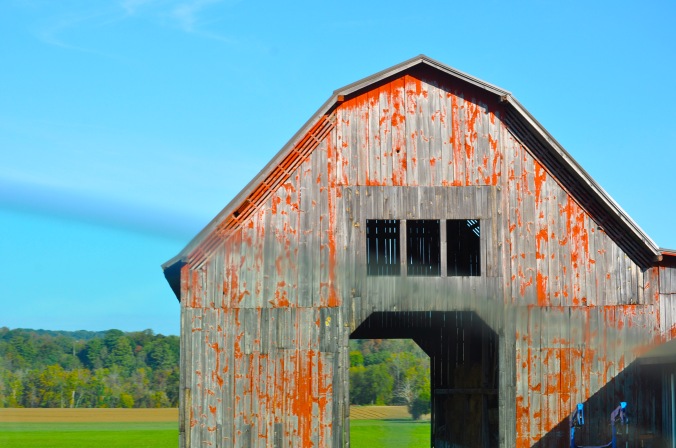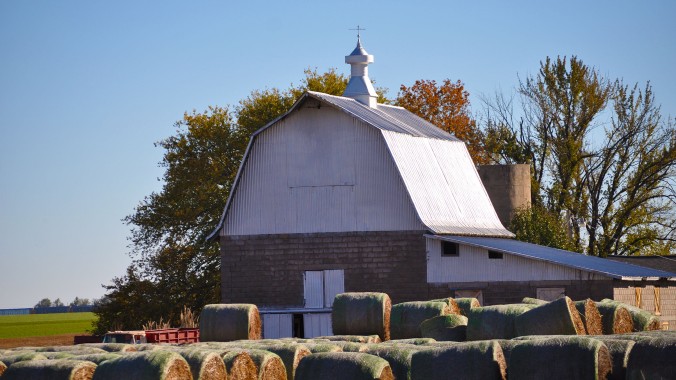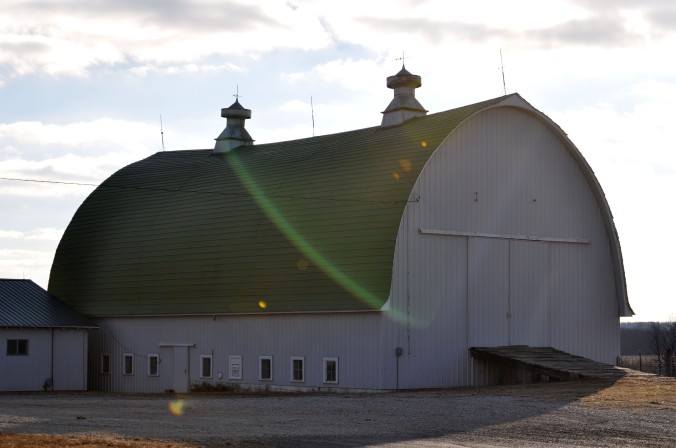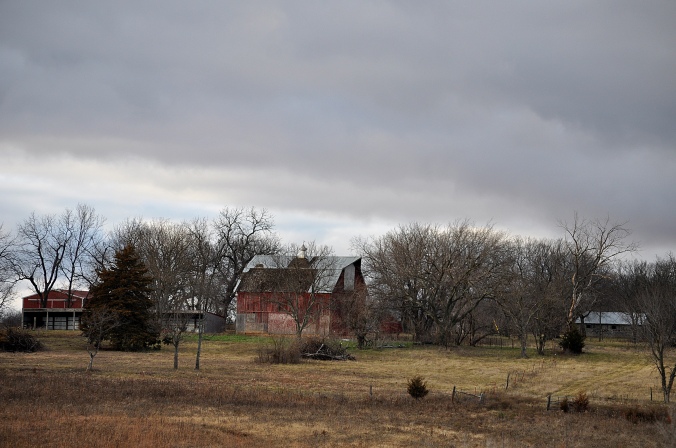Whitewater Falls Stock Farm
If you stumble across the Whitewater Falls Stock Farm on Falls Road, north of Towanda, you are probably lost. For sure, you have left Highway 296, and you are heading north, on Adams Road, or one of the other gravel feeder roads that snakes north along the Whitewater River.
National Register of Historic Places
The National Park Service and the National Register of Historic Places Program list the farm as being worthy of preservation, but the Park Service focuses on the turn of the century Craftsman house and not the true gem, which is the white barn. That is what one comes for, if one is not lost.
Now empty of animals, imagine dozens of majestic Percherons gathering contentedly about the feed racks.
Curious, I had to learn who built it and why.
James W. Robison
It has been but three or four generations since James W. Robison (1831 –1909) came to the United States from his native Scotland. The name was Robertson there, but as so often happens along the way, some clerk misspells a name, and the new spelling sticks.
Born near Banff, Scotland, he emigrated as a child, and arrived in America where his father took up the business of railroad contracting. As part of his payment, his father was given a large tract of land in central Illinois, and so the family moved there in 1835. After getting his education, Robison managed the family farm, establishing fruit orchards that were so successful that he was nicknamed “Apple Robison”. In 1874, he was elected to the Illinois Senate as a Republican and served two two-year terms.
In 1879 he visited Kansas and purchased a 3,840-acre tract of land along the Whitewater River in Butler County. In 1884, he moved his family to Eldorado, and took up the project of building his farm, Whitewater Falls, four miles north of Towanda. To the nearly 4,000 acres he added an additional 13,000 acres of land.
Percherons
Along with cattle and farming, he began to breed horses focusing on Percherons. Success came with hard work. Prizes were awarded the Robison Percherons at the World’s Fair, International, American Royal, at the State fairs of Illinois, Missouri, Virginia, Indiana, Kansas, Colorado, Arizona, Oklahoma and in far-away Canada. By 1911, the Whitewater Falls Stock Farm was the largest Percheron farm in the United States.
In 1897, he was elected to the Kansas Senate.
In 1909, he died of a stroke.
The setting is pretty
On the far side of the barn, to the north, the Whitewater River, really a stream, still flows past the elm, walnut, hackberry and sycamore trees on the banks.
The house is quite nice, but can’t be the same without J.C. Robison or his son James, who are now gone.
Imagine again, as Vol.P Mooney wrote long ago, in front of “the broad fireplace, [a chair] and the dancing flames shed a welcome warmth. On the library wall hangs a wonderful study in oil of a group of Percherons with Casino in playful pose in the foreground. A generous collection of trophies tells the story of numerous show ring conquests. Without, the duties of the day are done and twilight gently draws its veil of mystery. The fire on the hearth burns low, and the ceaseless song of the waterfall lends enchantment to the hour.”
History of Butler County, Kansas by Vol. P. Mooney.
Conclusion
Happy I came, I will leave you with this.
“Not all who wander are lost.”













